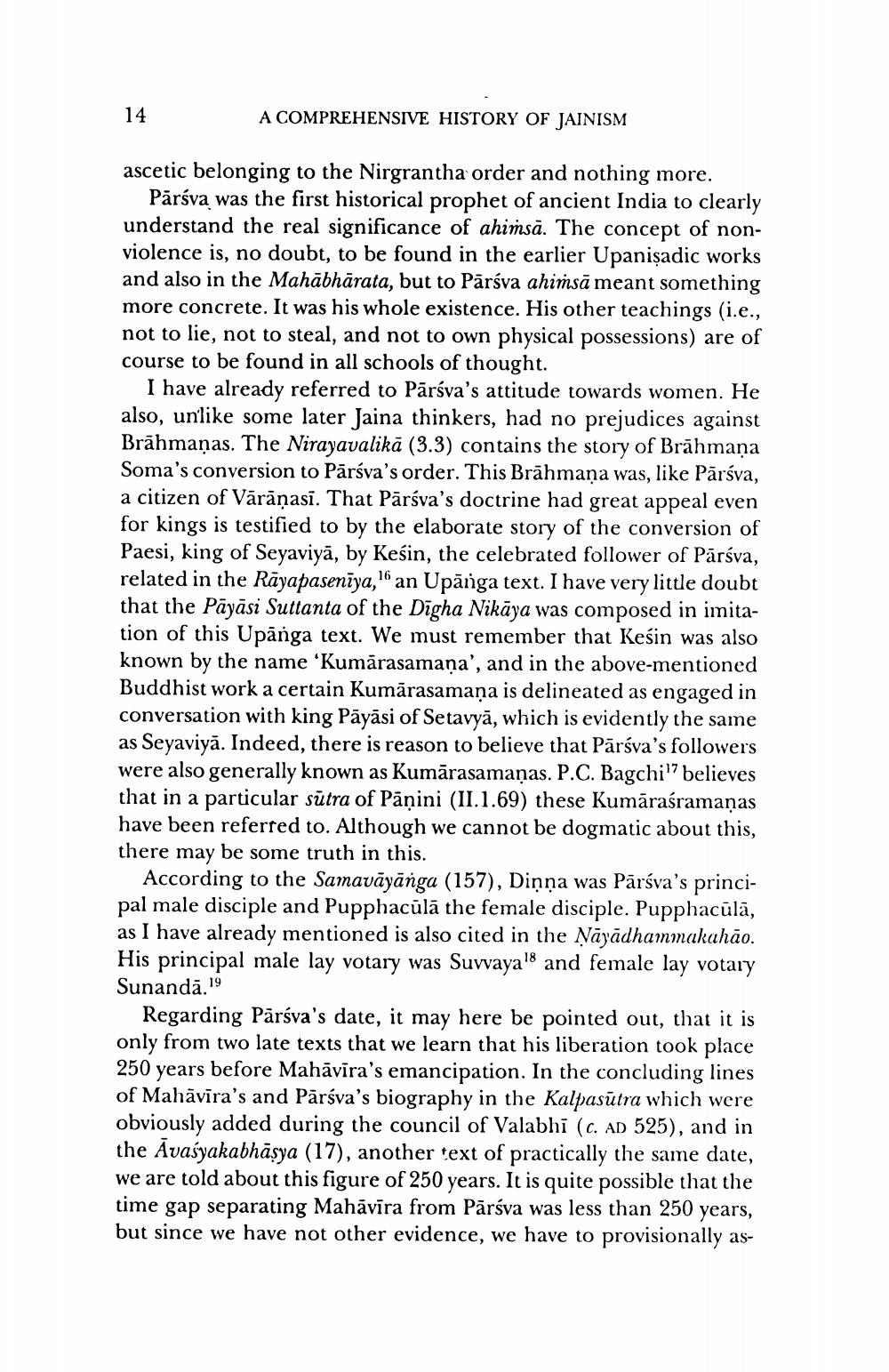________________
14
A COMPREHENSIVE HISTORY OF JAINISM
ascetic belonging to the Nirgrantha order and nothing more.
Pārsva was the first historical prophet of ancient India to clearly understand the real significance of ahimsā. The concept of nonviolence is, no doubt, to be found in the earlier Upanisadic works and also in the Mahābhārata, but to Pārsva ahimsā meant something more concrete. It was his whole existence. His other teachings (i.e., not to lie, not to steal, and not to own physical possessions) are of course to be found in all schools of thought.
I have already referred to Pārsva's attitude towards women. He also, unlike some later Jaina thinkers, had no prejudices against Brāhmaṇas. The Nirayavalikā (3.3) contains the story of Brāhmaṇa Soma's conversion to Pārsva's order. This Brāhmana was, like Pārsva, a citizen of Vārāṇasī. That Pārsva's doctrine had great appeal even for kings is testified to by the elaborate story of the conversion of Paesi, king of Seyaviyā, by Kesin, the celebrated follower of Pārsva, related in the Rāyapaseniya,16 an Upānga text. I have very little doubt that the Pāyāsi Suttanta of the Dīgha Nikāya was composed in imitation of this Upānga text. We must remember that Kesin was also known by the name ‘Kumārasamana', and in the above-mentioned Buddhist work a certain Kumārasamaņa is delineated as engaged in conversation with king Pāyāsi of Setavyā, which is evidently the same as Seyaviyā. Indeed, there is reason to believe that Pärśva's followers were also generally known as Kumārasamanas. P.C. Bagchi" believes that in a particular sūtra of Pāṇini (II.1.69) these Kumāraśramaņas have been referred to. Although we cannot be dogmatic about this, there may be some truth in this.
According to the Samavāyānga (157), Diņņa was Pārsva's principal male disciple and Pupphacūlā the female disciple. Pupphacūlā, as I have already mentioned is also cited in the Nāyādhammakahāo. His principal male lay votary was Suvvaya'8 and female lay votary Sunandā."
Regarding Pārsva's date, it may here be pointed out, that it is only from two late texts that we learn that his liberation took place 250 years before Mahāvīra's emancipation. In the concluding lines of Mahavira's and Parsva's biography in the Kalpasūtra which were obviously added during the council of Valabhi (c. AD 525), and in the Āvasyakabhāsya (17), another text of practically the same date, we are told about this figure of 250 years. It is quite possible that the time gap separating Mahāvīra from Pārsva was less than 250 years, but since we have not other evidence, we have to provisionally as




